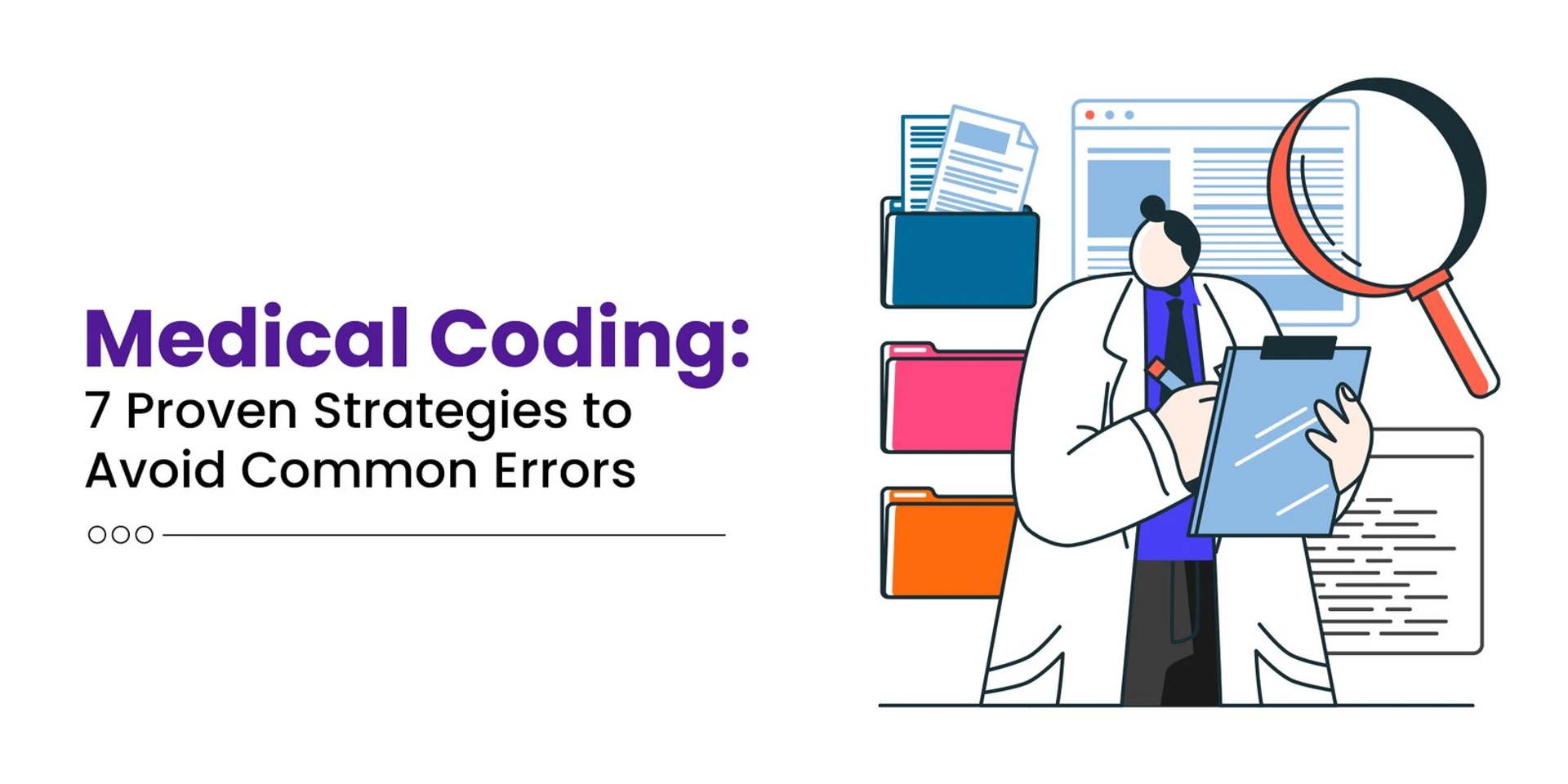Medical coding is an important step in healthcare revenue cycle management (RCM). However, errors in coding—no matter how trivial they are—can result in numerous problems for healthcare providers, from claim denials and reduced reimbursements to compliance risks.
This is when a big question arises—how can one detect medical coding errors, improve processes and protect against non-compliance?
This blog discusses the top seven techniques to help healthcare providers prevent common mistakes in medical coding, thereby accelerating their process effortlessly.
Implement Regular and Comprehensive Training Programs
Lack of proper knowledge and understanding of constantly evolving coding standards is one of the major reasons behind the occurrence of errors in medical coding. Now, this challenge can be effortlessly addressed if the coding and billing staff are well-trained and certified.
Additionally, the coders must update themselves with the latest changes in International Classification of Diseases (ICD-11), Current Procedural Terminology (CPT) codes, and the Healthcare Common Procedure Coding System (HCPCS).
For the uninitiated, most clinical medical codes are modified annually and even the smallest modification can affect the entire claim process. Besides educating on updates, coders must also be trained in complicated coding situations with examples and case studies to help them stay ahead of real-world challenges.
Utilize Advanced Coding Technology and Tools
Technology is a brilliant solution to address medical coding errors. Using advanced coding software and tools with natural language processing (NLP) and artificial intelligence (AI) can significantly reduce the chances of human errors.
Technologies like NLP and AI help in getting the best possible understanding of clean clinical documentation so that codes get automatically assigned.
In addition to this, most coding solutions offer auto-checkers for compliance, which can detect codes that may be inaccurate or not aligned with standards set by regulatory bodies like HIPAA. Such software can also flag incomplete or poor documentation that often is the cause of coding errors.
Perform Routine Internal Audits and Quality Checks
Internal coding audits are one of the efficient means by which healthcare providers can correct mistakes before they become major issues. Audits are useful in determining trends, patterns, and repeated errors caused by lack of coding understanding, deficiencies in documentation, and more.
Implementing coding compliance audit program is a smart step to cut down medical coding errors. It provides coders with feedback related to their performance, specifying problematic areas to help develop corrective action plans. Such a proactive approach enables the organization to rectify errors before they are detected by external audits that often result in hefty penalties.
In addition to this, random spot checks and periodic internal reviews of high-risk claims, such as chronic conditions or high-dollar procedures, can also avoid costly mistakes to a great extent.
Standardize Documentation Practices
Another leading cause of coding inaccuracies in the healthcare sector is inefficient and incomplete documentation. It is no news that coders utilize doctor’s notes and other hospital records to assign codes; therefore, ensuring accurate documentation is necessary. There is no denying that standardized documentation reduces the likelihood of coders using incomplete information.
Given the importance of complete and clear documentation, providers can incorporate templates or standardized forms in medical records to ensure that all the important information has been captured for each patient. Plus, training the clinical staff on how to enhance their documentation also helps.
Enhance Communication Between Coders and Providers
Clear communication between coders and healthcare providers is also equally necessary to reduce medical coding errors and downcoding. Most often, errors happen when a coder misunderstands the clinical intent that a provider covered in a documentation. This is why healthcare organizations should establish open lines of communication between the provider and the coder. This will certainly ensure that the coder has utmost clarity s/he needs to assign the accurate codes.
Healthcare providers can establish this communication through routine meetings, direct query processes, or even involve coders in clinical rounds or discussions. At the same time, providers should also be open to reach out to coders to understand documentation requirements.
Ensure Compliance with Regulatory Guidelines
Another very critical aspect of medical coding is its compliance with regulatory standards; failure in this area may result in heavy fines and penalties. Healthcare organizations must, therefore, ensure their coding practices are fully compliant with industry standards such as HIPAA and payer-specific requirements.
Compliance-based coding audit is one of the ways to do this. These audits determine whether or not an organization is compliant with all relevant regulations including documentation requirements, accuracy in coding, and billing practices. The providers must also update and review their coding policies periodically to make sure alignment with the current standards.
Track and Analyze Audit Results for Continuous Improvement
An efficient medical coding audit strategy is not only the act of auditing but also includes analyzing the results and acting on corrective measures. Monitoring results can clearly present certain patterns or persisting errors, that in turn, can allow healthcare providers to work on the areas where improvements are urgently needed.
Reviewing audit findings may also enable the healthcare organization to take corrective steps including improving documentation practices, refreshing coding software, or partnering with professional medical coding experts. In addition to focusing on correcting individual medical coding errors, it is also crucial to look at the bigger picture to improve all other RCM processes and reduce the overall error rate.
Learn how Pain Management Group Revenue Leaps by 30% with Streamlined Claims Filing.
Wrapping Up
By implementing the seven strategies outlined in this blog—regular training, leveraging advanced technology, conducting internal audits, standardizing documentation, enhancing communication, ensuring compliance, and analyzing audit results—healthcare organizations can significantly reduce the risk of common medical coding errors.
These practices not just protect against financial losses but also support the delivery of high-quality patient care by making sure that the coding process is accurate, efficient, and compliant with all industry standards.
By making these strategies part of your core medical coding workflow, you can effortlessly create a robust, error-resistant coding infrastructure that ensures financial and operational success.
The investment in these preventive measures today will yield substantial returns through reduced claim denials, improved revenue cycle management, and enhanced organizational reputation in the long run.







